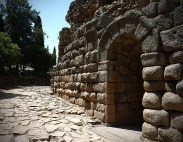
Roman Hispania
Spain’s rich culture and history owe much to the many nationalities who have fought for control of her land. Traces of these passing civilizations can be found all over the country, and some of the most interesting of these belong to the Roman era.
The Romans first arrived in Spain in 218BC, although they were not the first to make the country their home. Previously, early man had established communities throughout the Iberian Peninsula, and later the Celts and Phoenicians did the same.
The Phoenicians had already begun to build their own trade zones and develop what would much later become the cities of Cartegena and Cadiz. However, it was impossible for the Romans to make Hispania (as they named Spain) a true part of their empire while the Phoenicians were in control. Agreements which kept the peace between the Phoenicians and the Romans soon came to an end, leading to the First and Second Punic Wars.
Hispania remained unsettled for over two hundred years, until the reign of Emperor Augustus, who achieved Pax Romana. This was the time when Hispania, along with the rest of the Roman empire, flourished. Many important Romans, including the future emperor Hadrian were born in Spain and the country became a vital trade region. The Romans made use of the land, exporting precious metals, olive oil, wool, wheat and dried fish products which strengthened their wealth and economy.
The Roman’s also found importance in developing Hispania’s cities and municipalities, which they divided into three provinces. Existing cities were improved while new ones were built – including Valencia and Zaragoza. The Romans sought to bring their culture to the country, building an infrastructure of irrigation systems, constructing public baths, amphitheatres and roads.
Rome’s complete rule over Spain lasted until 409AD when Germanic tribes began their takeover of the Mediterranean region. Although the Western Roman Empire finally fell in 476AD, a visitor to modern Spain will discover a surprisingly amount of architecture has survived the centuries. Some of the best sites include the ancient city of Italica close to modern Seville, where original mosaic floors can still be seen, and the breathtaking 29 metre aqueduct in Segovia. These monuments to the sheer determination of the Romans are a fascinating glimpse into distant history and will leave you wondering whether our modern structures will stand the test of time in the same way.
 Follow
Follow


